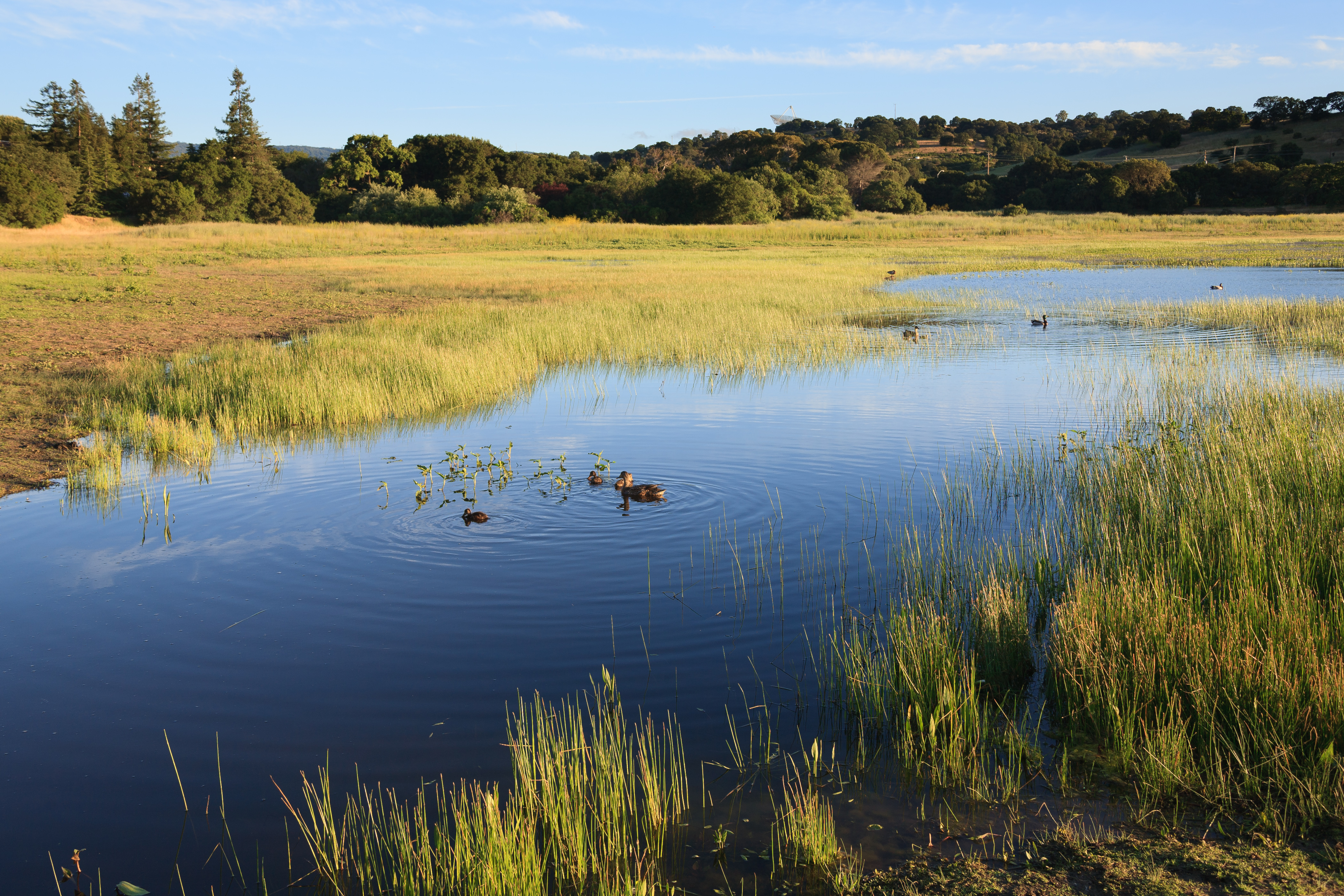Lake Lagunita on:
[Wikipedia]
[Google]
[Amazon]
Lake Lagunita, informally referred to as Lake Lag, is an artificial dry lake in Stanford University,
 During winters with normal rainfall, the lake used to be filled by diversion from
During winters with normal rainfall, the lake used to be filled by diversion from
Lake Lag Trail
Many dormitory residences, row houses, and several fraternities are located near the lake, including the Lagunita residences, Roble Hall, Enchanted Broccoli Forest (EBF), Narnia, Kappa Alpha, and Jerry.
California
California is a state in the Western United States, located along the Pacific Coast. With nearly 39.2million residents across a total area of approximately , it is the most populous U.S. state and the 3rd largest by area. It is also the m ...
, located on the western side of the Stanford campus near the Lagunita residences. It was created in to provide irrigation for Palo Alto Stock Farm.
Sources
 During winters with normal rainfall, the lake used to be filled by diversion from
During winters with normal rainfall, the lake used to be filled by diversion from San Francisquito Creek
San Francisquito Creek (Spanish for "Little San Francisco" - the "little" referring to size of the settlement compared to Mission San Francisco de Asís) is a creek that flows into southwest San Francisco Bay in California, United States. Histo ...
to a three-meter depth along with artificial water level maintenance, allowing recreational use by students.S.J. Barry and H.B. Shaffer. "The Status of the California Tiger Salamander (Ambystoma californiense) at Lagunita: A 50-Year Update". ''Journal of Herpetology'' 28, No. 2 (June 1994), 159–164. However, the lake has not been artificially filled since the late 1990s, due to problems either with the lake's damming walls or with conservation efforts.Newman, Loren. "Endangered Salamanders to be Protected" The Stanford Daily
''The Stanford Daily'' is the student-run, independent daily newspaper serving Stanford University. ''The Daily'' is distributed throughout campus and the surrounding community of Palo Alto, California, United States. It has published since the ...
, May 5, 2008Zigterma, Tom. "Lake Lag and its Dam" The Stanford Daily, May 8, 2008 The diversion dam on San Francisquito Creek that had been used to fill the lake was removed in 2019.
As the lake is no longer permanently filled, it serves as a drainage basin and contains vernal pool
Vernal pools, also called vernal ponds or ephemeral pools, are seasonal pools of water that provide habitat for distinctive plants and animals. They are considered to be a distinctive type of wetland usually devoid of fish, and thus allow the safe ...
s throughout the winter and spring months. It is during this time that it serves as a vital breeding ground for endemic amphibians, rabbits, jack-rabbits, and ground squirrels.
As of May 2020, Stanford University is constructing a steel-stake & plastic-mesh fence around the dry lake. This may isolate & impede native wildlife including jack-rabbits (common hare), cottontail rabbits, voles, ground squirrels, tree squirrels, moles, coyotes and other endemic species.
Uses
The lake provides a site for recreation, and functions as a holding basin for flood control. It also offers habitat for animals. Adjacent to the lake is a perimeter trail, which is open for jogging or walking.Many dormitory residences, row houses, and several fraternities are located near the lake, including the Lagunita residences, Roble Hall, Enchanted Broccoli Forest (EBF), Narnia, Kappa Alpha, and Jerry.
Wildlife
Amphibians: * California tiger salamander ('' Ambystoma californiense''): During the winter, the lake is the breeding ground for a population ofCalifornia tiger salamander
The California tiger salamander (''Ambystoma californiense'') is a vulnerable amphibian native to California. It is a mole salamander. Previously considered to be a subspecies of the tiger salamander (''A. tigrinum)'', the California tiger sal ...
s, which are classified as vulnerable by the IUCN. However, the Lagunita population is believed to be at greater risk because individuals are frequently killed on or nearby Junipero Serra Boulevard during their migrations to and from the lake. As a result, a $100,000 system of migration tunnels was placed underground in 2001.
* Western toad ('' Bufo boreas'')
* Pacific chorus frog ('' Pseudacris regilla'')
Birds:
* Mallard (''Anas platyrhynchos
The mallard () or wild duck (''Anas platyrhynchos'') is a dabbling duck that breeds throughout the temperate and subtropical Americas, Eurasia, and North Africa, and has been introduced to New Zealand, Australia, Peru, Brazil, Uruguay, Arge ...
'')
* Great blue heron ('' Ardea herodias'')
* Great egret ('' Ardea alba'')
See also
*List of lakes in California
There are more than 3,000 named lakes, reservoirs, and dry lakes in the U.S. state of California.
Largest lakes
In terms of area covered, the largest lake in California is the Salton Sea, a lake formed in 1905 which is now saline. It occupie ...
* List of lakes in the San Francisco Bay Area
This list of lakes in the San Francisco Bay Area groups lakes, ponds, and reservoirs by county. Numbers in parentheses are Geographic Names Information System feature ids.
Alameda County
* Almond Reservoir ()
* Berryman Reservoir ()
* Bethany ...
References
{{authority control Lagunita Stanford University places Lagunita Laqunita